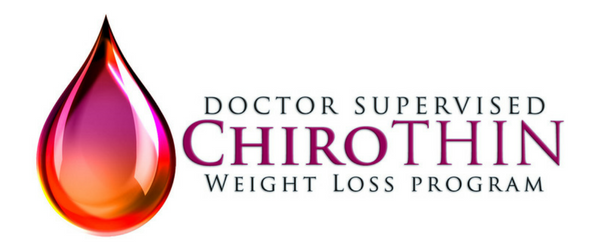
A lot of Americans worry about their health. All the proof you need is a quick glance at any top 10 New Year’s Resolutions list. Odds are good that things like getting fit, losing weight, and eating healthier make the top five.
Of course, healthy eating sounds good, but it often proves challenging for people who didn’t grow up eating healthy foods. How do you pick out good advice from fads and dieting trends?
If you want a better diet, keep reading our guide on healthy eating for beginners.
Less Red Meat
Many people who take a stab at eating healthier hear that they should eat less red meat. They assume that means eating red meat less often when it often means eating more reasonably sized portions.
A healthy portion of red meat is approximately 3 ounces per serving. Take a trip to the local grocery store, and you’ll soon discover that most red meat comes in packages of at least a pound. Even steaks are routinely 12 ounces or larger.
That puts a lot of the burden on you to manage your portion sizes. This is where a kitchen scale comes in very handy. It lets you divide up and weigh food portions.
So, if you love your red meat, have it three times a week. Just have it in 3-ounce portions.
Less Processed Meat
Processed meats are generally a variation of red meats, but they offer even less value than unprocessed red meat. Most processed meats feed your body more calories and fat, but they provide less protein.
In essence, you get more of what you don’t want and less of what your body actually needs. Plus, they raise the chances of cancer.
Processed meats include a lot of popular food items, such as:
- Hot dogs
- Bacon
- Ham
- Pepperoni
- Sausage
The takeaway here isn’t that you should ditch these things forever but that you should only indulge in them occasionally. It’s eating them on a regular basis that really hurts your health.
More Fruits and Vegetables
Eating more fruits and vegetables has been a staple piece of advice from the medical community for years. That advice stems from a couple of reasons.
Fiber Intake
At the most basic level, fruits and vegetables offer you a lot of fiber. Fiber helps you feel full, which makes you less likely to snack on unhealthy, high-calorie, low-nutrient snacks.
Adding fruits and vegetables to a meal also helps you feel full without taking in a big portion of protein or carbohydrates, such as potatoes or bread.
As an added bonus, fiber also helps your digestive tract operate efficiently. That can make bowel movements more regular and prevent constipation.
Vitamins and Nutrients
Your body is a complex piece of organic machinery. It requires fuel to operate efficiently. Unlike your car, though, you can’t just give it one kind of fuel all of the time.
Your body needs a wide cross-section of vitamins, nutrients, and even minerals to keep everything running smoothly. Fruits and vegetables do a lot of heavy lifting in those terms.
For example, dark green veggies like kale or broccoli provide:
- Vitamin A
- Vitamin B9
- Vitamin C
- Vitamin K
- Calcium
- Iron
On the fruit side of things, it’s hard to go wrong. Even the humble banana is a good source of Vitamin B6, Vitamin C, and potassium.
Taken as a whole, fruits and vegetables also provide your body with important antioxidants that help keep your cells healthy.
Whole Grain Options
Americans eat a lot of refined grains. For example, that white bread you find on the shelves almost everywhere uses highly refined flour. Most off-the-shelf kinds of pasta are the same story.
Whole grain options typically include more of the things you want in your food, such as B vitamins, protein, and fiber. Some easy ways to get more whole grain into your diet include:
- Oats
- Quinoa
- Whole-grain bread and pasta
- Brown rice
For example, you can have a bowl of oatmeal a few times a week instead of cold cereal. You can use brown rice instead of white rice for that stir fry.
Meal Planning
One of the ways you can make your food part of a healthy living lifestyle is with some careful meal planning. After all, how often do people get home, realize they don’t have a dinner plan, and order food?
A meal plan helps you in a few ways. One, it helps you create a shopping list populated with healthy foods. It also lets you pull the right kind of meat out of the freezer in the morning.
Finally, it helps limit the impulse to order out. You aren’t trying to figure out a dinner plan because you already have one.
You can even apply this to lunches and prep healthier lunch options to take with you to work.
Get Professional Assistance
Sometimes, beginners find all the demands of healthier eating a bit more than they can manage. Between meal planning, shopping, and portion management, you can feel overwhelmed.
In cases like this, it’s often helpful to turn to a professional, doctor-supervised weight loss program, such as the ChiroThin program. This kind of program will typically provide you with a meal plan designed to work with the program.
It removes a lot of the uncertainty. Plus, you know a doctor is helping guide your weight loss and meal planning toward the right goal.
Healthy Eating for Beginners and You
Healthy eating for beginners is often a learning process. You will often find that you must un-learn a lot of bad habits. For example, you will likely learn that you eat far more red and processed meats than is actually healthy.
You will probably also discover that you don’t get enough fruits, vegetables, and whole-grain foods. While changing these eating habits can prove challenging, they’ll also likely leave you feeling better and help you lose weight.
Are you ready to get started on the path to a healthier you? Click here to find a ChiroThin doctor in your area.
